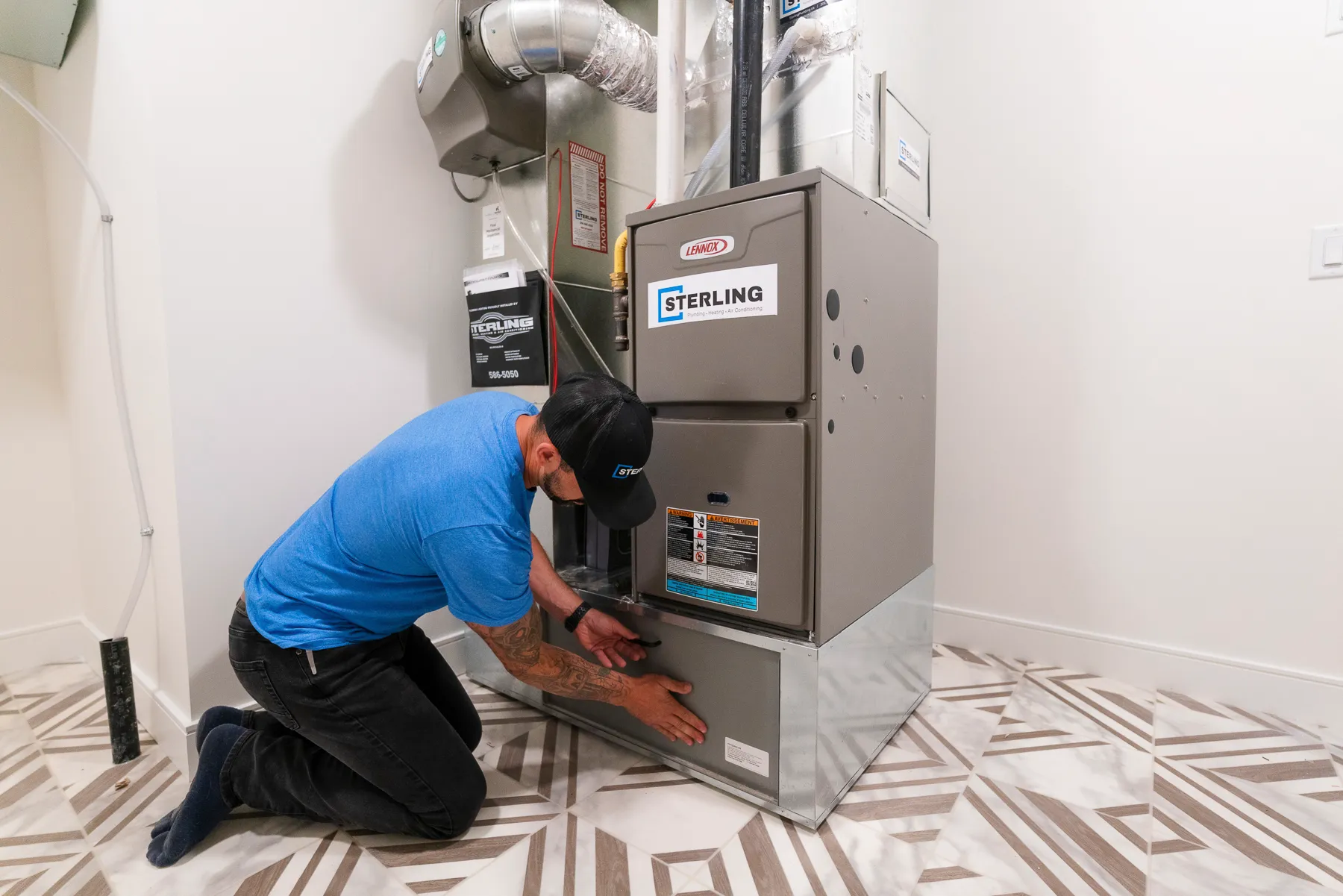Furnace Maintenance
Save 20% on a 21-point Furnace Inspection. Now Only $126 for a limited time.


The impact of maintenance on your peace of mind and comfort.
In our experience engaging in furnace maintenance service ensures homeowners receive consistent comfort, financial clarity, and savings from the outset and over time.
- Electric Thermostat Issues
- Filter Problems
- Clogged Condensate Lines
- Gas Valve Issues
- Clogged Burner

Get a 21-point inspection and tune-up.
One of our expert Sterling Heating Technicians will conduct a 21-point inspection and tune-up of your furnace and catch any small issues before they evolve into bigger ones.
What's involved?
Despite their relatively mechanical simplicity, all furnaces have multiple components that require regular checks. A 21-point inspection examines each, ensuring no damage and performing the required maintenance.
1

Thermostat - Verify Proper Operation
2

Venting - Perform visual inspection
3

Grade - Check and Ensure proper grading of the furnace and venting
4

Drain - Visual inspection for blockage/damage
5

Condensate - Clean condensate drain and trap
6

Heat Exchanger - Visual inspection
7

Gas Lines - Inspection of gas line integrity
8

Blower Motor - Check bearings & pulley alignment
9

Blower Motor - Clean Cooling Openings
10

Burner & Transfer Rails - Test burner operation and clean transfer rails
11

Safety Limits - Verify Proper Operation
12

Hot Surface Igniter - Record Ohms reading
13

Flame Sensor - Micro amps reading Before cleaning
14

Flame Sensor - Micro amps reading After cleaning
15

Inducer Motor - Record low amp draw
16

Inducer Motor -Record high amp draw
17

Blower Motor - Record low amp draw
18

Blower Motor - Record high amp draw
19

Electrical Connections - Check and tighten all electrical connections
20

Furnace/Air Filter - Record filter size/Replace air filter
21

Wipe Down and Vacuum all Surfaces
Hear from our customers
Ready to get started?

Book a Consultation
We have HVAC systems experts available that would be happy to share their knowledge, answer questions, and suggest solutions for Furnaces, Water Heaters, and A/C.
Thank you! Your submission has been received!
Oops! Something went wrong while submitting the form.

SterlingCare plans start as low as $9.99/month.
Take back control and enjoy peace of mind with a SterlingCare Maintenance Plan.


